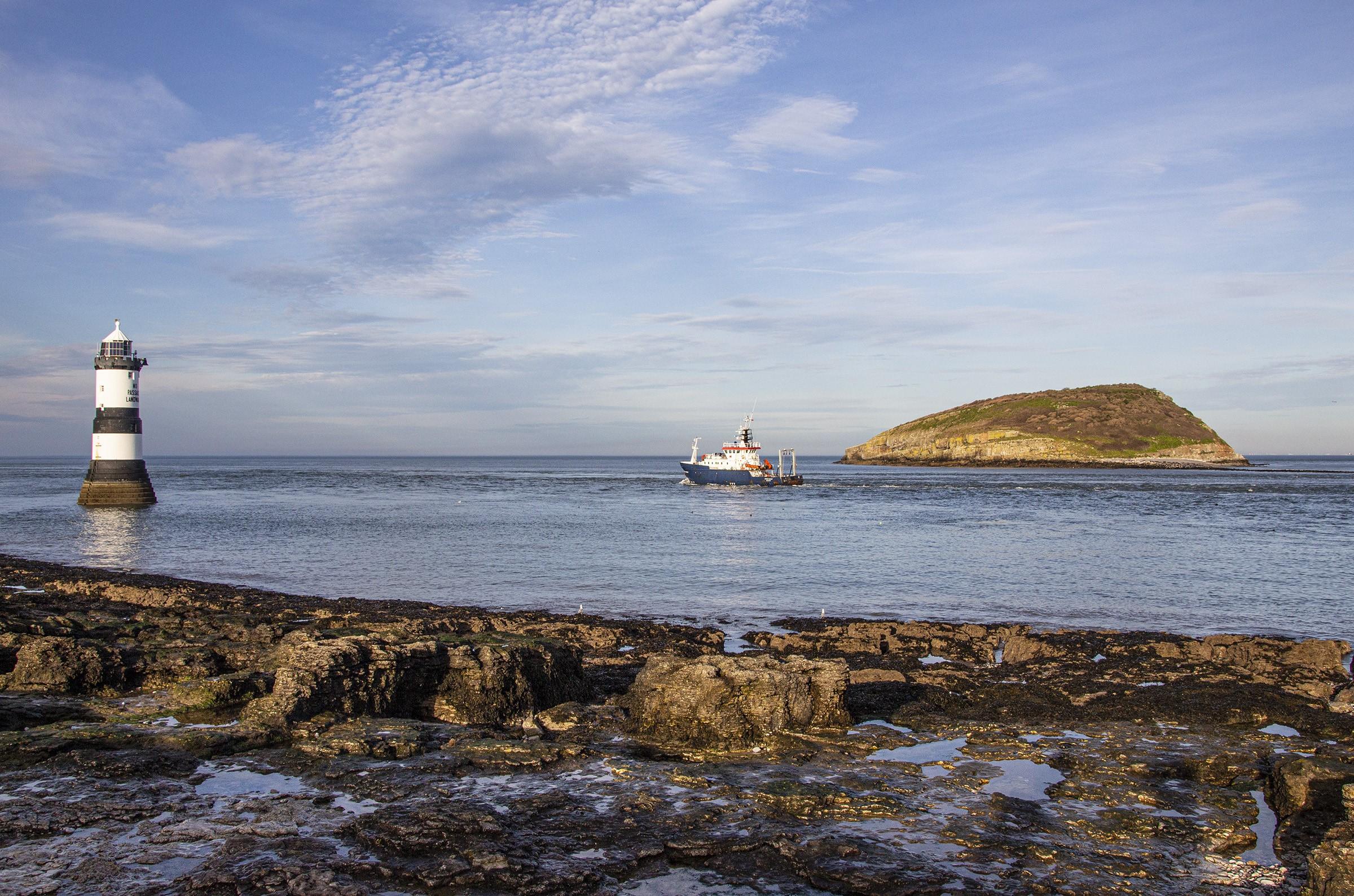
4 minute read
Nature's Corner - Puffin Island
Trwyn Du Lighthouse and Puffin Island from Penmon Point - PJR
We’ve all seen it as we drive along the A55 coast road towards Bangor, Holyhead or Caernarfon that rather large mound just off the eastern coast of Anglesey, but how many of us have actually been anywhere near the shores of this magical place?
Advertisement
The Welsh name for it is Ynys Seiriol which refers to Saint Seiriol. The son of Owain Ddantgwyn, a 5th-century ruler of the Kingdom of Gwynedd. Seiriol founded and governed an ecclesiastical settlement at Penmon on Anglesey. In later life, he abandoned his responsibilities there to establish a hermitage on the nearby island, where his remains are thought to rest.
It is of course Puffin Island; a magnificent reserve for nature and a designated Special Protection Area (SPA) with the opportunity to view a plethora of wildlife without even touching the rocky shoreline. The closest one can get to the island is obviously by boat; and this is easily arranged via one of the organised trips which leave regularly from Beaumaris pier.
The trips run for approximately 90 minutes and take in much of the coastline along the South-eastern Menai Straits which makes for a very pleasant ride; especially if there is a running commentary aboard whereby much of the area’s history is divulged and it is even more enjoyable if the sea is calm!
As you head out from the pier towards Penmon point, with its Priory and old Limestone quarries visible near the beach, two large, tall houses appear standing proud opposite Puffin Island: The old Pilot and Lighthouse keeper’s homes, now holiday lets.
You will notice the upturned hull of the “Hoveringham 2” ... A 160ft long sand dredger which sank just east of Beaumaris in 1971; its hull standing out like a small barren isle which is now a popular location for weary Cormorants drying their wings and Sandwich Terns taking a breather in between Sand-eel fishing sorties.
Once close to at the Island itself, the smell of guano, heavily “scented” with oily fish fills the air, and the marvellous cacophony of thousands of seabirds is more than apparent. These are mainly Cormorants, Shag, Razorbill, Common Guillemot, as well as dozens of Gulls and Kittiwakes. Sometimes Eiders, the fastest flying duck in the UK can be seen in small flotillas, the drakes looking so striking in their black,

white and green plumage. Also look out for Black Guillemots with their handsome black plumage and striking white wing bars and bright red legs.
Always a pleasure to see is a healthy population of Grey Seals who gather at the Eastern side of the island, the UK holding 40% of the world’s population of these creatures, and of course, the nation’s favourite, the Puffins.
Once extinct here due to an infestation of Rats that had devastated the bird population, eating the eggs and chicks of breeding birds, there are now in the region of 8 pairs of Puffins nesting on the island after the area was cleared of the Rats in 1998.
These charismatic little birds are only here to breed and once their single chick or “Puffling” has become old enough to leave during August, it ventures out of the burrow which has been its home for 45 days and hurls itself into the sea below.
Unable to fly at this point, it then floats and swims out to sea; a little later the adults swim off and their late summer moult begins. The birds will swim and fish throughout the winter sometimes diving as deep as 60 metres below the surface to
catch their food comprising mainly of Sand-eels. They will venture far out to sea; it is believed that they even travel as far as the Irish coast before the following Spring sees them returning to the island to breed.

A wonderful way to spend a couple of hours and a real treat for the kids; getting as close as you are ever likely to get to these creatures, highly recommended indeed with the best time to visit May to late July. Dave Parry.





